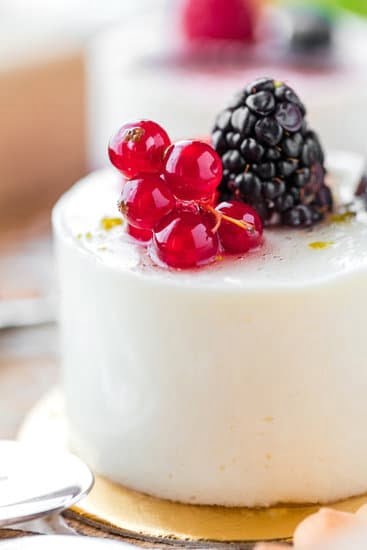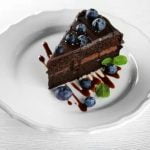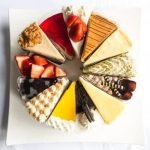Are you ready to take your cake decorating skills to the next level? If so, learning how to decorate a cake with a piping bag is an essential skill to master. Whether you are a beginner or have some experience in cake decoration, using a piping bag can help you create beautiful and professional-looking designs on your cakes.
Cake decoration has been an art form for centuries, allowing bakers and confectioners to express their creativity and showcase their talents. With the right tools and techniques, anyone can learn how to create stunning designs on their cakes using a piping bag.
In this article, we will explore the basics of using a piping bag, from choosing the right tip to preparing the bag for use. We will also discuss the importance of preparing the frosting to achieve the perfect consistency for decorating.
Additionally, we will cover various techniques for using a piping bag, troubleshooting common problems that may arise, and even advanced decorating techniques for those looking to take their skills further. So let’s dive in and discover the art of cake decoration with a piping bag.
The Basics of Using a Piping Bag
Cake decoration is a beautiful art that allows you to unleash your creativity and showcase your baking skills. One of the key tools in cake decorating is the piping bag, which allows you to create intricate designs, borders, and lettering on your cakes. In this section, we will explore the basics of using a piping bag, including choosing the right tip and preparing the bag for decorating.
Choosing the Right Tip
When it comes to choosing the right tip for your piping bag, it’s important to consider the type of design you want to create. Different tips produce different shapes and patterns, so it’s essential to have a variety of tips in your decorating kit.
Round tips are perfect for creating outlines and writing, while star tips can be used to make rosettes and stars on your cake. Leaf tips are great for creating foliage or petals, and petal tips can be used to make beautiful flower designs.
Preparing the Bag
Before you start decorating, it’s crucial to properly prepare your piping bag. Begin by selecting a sturdy disposable or reusable piping bag that is large enough to hold your frosting without overflowing. Once you’ve selected your bag, snip off the end to fit the chosen tip snugly inside.
Insert the tip into the bag and push it down until it reaches the bottom. Then fill the bag with your prepared frosting, making sure not to overfill it as this can lead to messy leaks while decorating.
The Perfect Consistency
Achieving the perfect consistency for your frosting is essential for successful cake decorating with a piping bag. If your frosting is too thick, it will be difficult to pipe smoothly; if it’s too thin, it will easily melt on contact with the cake. Aim for a smooth and creamy texture that holds its shape when piped but is not too stiff or runny. Adding small amounts of liquid or powdered sugar can help adjust the consistency as needed.
Mastering these basics of using a piping bag will set you up for success in cake decorating. Now that you understand how to choose the right tip, prepare your bag, and achieve the perfect consistency for your frosting, you’re ready to move on to learning some essential techniques for using a piping bag on cakes.
Preparing the Frosting
Before you can create stunning designs and patterns on your cake with a piping bag, it’s crucial to have the right consistency of frosting. The perfect frosting consistency is essential for achieving clean lines, intricate details, and smooth finishes on your cake. To achieve this, start with room temperature butter and do not overheat it when softening. If it becomes too soft or starts to melt, your frosting will not hold its shape when piped.
Once you have your butter at the right temperature, gradually add sifted powdered sugar to achieve the desired sweetness and texture. Be sure to mix the ingredients thoroughly to avoid any lumps in your frosting. If your frosting ends up too thick, you can add small amounts of milk or cream until you reach the desired consistency. On the other hand, if it’s too thin, add more powdered sugar until it reaches the right thickness.
Another important factor in achieving the perfect frosting consistency is the type of tip you’ll be using for decorating. For basic outlines and borders, a round tip works well with a medium-thick consistency frosting.
However, for intricate designs and writing, a smaller round tip or star tip would require a thinner consistency to flow smoothly through the piping bag. With these tips in mind, you’ll be ready to move on to creating beautiful decorations on your cake using a piping bag.
Technique #1
Creating beautiful borders and outlines on a cake can really take your dessert to the next level. Using a piping bag is a great way to achieve clean, professional-looking edges and details on your cakes. In this section, we will discuss how to prepare your piping bag for this technique and some tips for achieving perfect results.
To start, it’s important to choose the right tip for creating borders and outlines. A round or star-shaped tip is commonly used for this purpose, as they allow you to easily pipe smooth or textured lines around the edges of your cake.
Once you have chosen the appropriate tip, prepare your piping bag by snipping off the end of the bag and inserting the desired tip. Be sure to push the tip down as far as it will go to avoid any frosting from seeping out of the top.
When preparing the frosting for creating borders and outlines, it’s essential to achieve the perfect consistency. The frosting should be firm enough to hold its shape but still soft enough to pipe smoothly. If the frosting is too stiff, it can be difficult to pipe, while frosting that is too soft may result in messy, inconsistent lines. It’s best to start with a small amount of frosting and add more as needed until you reach the ideal texture.
| Key Points | Description |
|---|---|
| Choosing the right tip | Use a round or star-shaped tip for creating borders and outlines |
| Preparing the piping bag | Snip off the end of the bag and insert the desired tip |
| Preparing the frosting | Achieve a firm yet soft consistency for smooth piping |
Technique #2
Writing and lettering with a piping bag is a delicate art that can add a personal touch to any cake. Whether you’re writing a heartfelt message, adding the guest of honor’s name, or simply labeling different flavors, mastering this technique can take your cake decorating skills to the next level. To get started, you’ll need to prepare your piping bag with the appropriate tip and frosting consistency.
When it comes to choosing the right tip for writing and lettering, a small round tip or even a thin straight tip will work best. These tips allow for precise lines and intricate details, making them perfect for writing on cakes.
Before filling the bag with frosting, make sure to prepare it properly by snipping off the end of the piping bag and inserting the chosen tip. Once the bag is ready, it’s time to focus on achieving the perfect frosting consistency.
The key to successful writing and lettering with a piping bag lies in achieving the ideal frosting consistency. The frosting should be thick enough to hold its shape but still smooth enough to flow easily through the piping tip.
To achieve this balance, consider using less liquid in your frosting recipe or gradually adding powdered sugar until you reach the desired texture. With proper preparation and attention to detail, you’ll be able to beautifully write and letter on your cakes using a piping bag.
Technique #3
Using a piping bag to create intricate designs and patterns on a cake can take your baking skills to the next level. With the right technique and a little practice, you can wow your friends and family with professional-looking desserts. Here are some tips for mastering this advanced cake decorating technique:
- Choose the right tip: The tip you use will play a significant role in the types of designs you can create. For fine details and delicate lines, use a small round tip. If you want to make larger, more bold designs, consider using a star or petal tip.
- Practice on parchment paper: Before decorating your cake, it’s a good idea to practice your designs on parchment paper. This will help you get a feel for how much pressure to apply and how quickly to move the bag as you pipe.
- Plan out your design: Before you start piping onto your cake, have a clear plan for the design you want to create. Whether it’s intricate lace patterns, floral motifs, or elaborate borders, having a plan in mind will help you execute the design more effectively.
Once you’ve mastered the basics of using a piping bag and have achieved the perfect frosting consistency, experimenting with creating intricate designs and patterns is where your creativity can truly shine.
Remember that like any skill, practice makes perfect when it comes to cake decorating. Don’t be discouraged if your first attempts aren’t flawless-keep practicing and refining your technique, and soon enough, you’ll be decorating cakes like a pro.
Troubleshooting Common Piping Bag Problems
When using a piping bag to decorate cakes, it is important to be aware of some common problems that may arise, such as clogs and leaks. These issues can quickly turn a beautiful cake decorating session into a frustrating experience, but with the right tips and tricks, they can easily be avoided.
Avoiding Clogs
One of the most common problems when using a piping bag is encountering clogs in the tip. To prevent this from happening, it’s essential to ensure that the frosting or icing being used is at the correct consistency. If the frosting is too thick, it can easily clog the tip of the piping bag.
On the other hand, if the frosting is too thin, it may not hold its shape when piped onto the cake. Finding the perfect consistency for your frosting is crucial in preventing clogs.
Preventing Leaks
Another issue that decorators often face when using a piping bag is leaks. Nothing can ruin a beautifully decorated cake faster than frosting leaking out of the sides of the bag. To prevent leaks, it’s important to securely close and twist the top of the piping bag before applying pressure to pipe out the frosting. Additionally, make sure to check for any small tears or holes in the bag itself that could be causing leaks.
Cleanliness Is Key
Properly cleaning and maintaining your piping bags after each use can also help prevent both clogs and leaks. Residual frosting stuck in the tip or inside the bag can harden and cause future clogging issues. Thoroughly washing and drying your piping bags after each use will keep them in good condition and free from any blockages. Following these tips will help you avoid common piping bag problems and ensure smooth and successful cake decorating experiences every time you use them.
Advanced Decorating Techniques
When it comes to taking your cake decorating skills to the next level, using multiple colors and textures can truly make your creation stand out. With the right techniques and a little bit of practice, you can transform a simple cake into a work of art that will impress everyone who sees it.
To achieve a stunning finish with multiple colors and textures, you will need to have the right tools and materials on hand. This includes different frosting colors, piping tips, and possibly even additional decorations such as sprinkles or edible flowers. Here are some steps to help you master this advanced decorating technique:
- Start by preparing multiple colors of frosting in separate piping bags. Make sure each bag is fitted with the desired tip for the design you want to create.
- When working with multiple colors, it’s important to plan out your design beforehand. Decide where each color will go and how they will blend together on the cake.
- To add texture to your design, consider using different piping tips to create varying patterns or effects. For example, you may use a star tip for one color and a round tip for another, creating a contrast in texture on the cake.
By mastering the use of multiple colors and textures, you can take your cake decorating skills to new heights. With practice and creativity, you’ll be able to create beautifully decorated cakes that will leave a lasting impression on anyone who sees them. So don’t be afraid to experiment with different color combinations and patterns – the possibilities are endless.
Conclusion
In conclusion, mastering the art of cake decorating with a piping bag opens up a world of creative possibilities for adding stunning designs and personalized touches to your baked creations. By following the basics of using a piping bag, preparing the right frosting consistency, and practicing various techniques such as creating borders, writing, and making intricate designs, you can elevate the presentation of your cakes to professional levels.
Once you have decorated your cake with finesse, it’s time to showcase your beautifully adorned creation. Whether it’s for a special occasion or just to indulge in some artistic expression, taking pride in your decorated cake is truly satisfying.
Be sure to capture photos of your masterpiece from different angles and in various lighting to fully appreciate the details of your handiwork. Share your beautiful cake on social media or with friends and family to receive well-deserved praise for your craftsmanship.
For those looking to further enhance their skills in cake decoration with a piping bag, there are plenty of additional resources available for further learning. From online tutorials and advanced classes to books and workshops, there are endless opportunities to expand your knowledge and techniques.
Embrace this creative journey as an ongoing process of growth and improvement, and continue to explore new ideas and inspirations for decorating cakes with a piping bag. Whether it’s for personal enjoyment or professional aspirations, the art of cake decoration is a delightful skill that brings joy to both creator and consumer alike.
Frequently Asked Questions
How Do You Frost a Cake With a Piping Bag?
Frosting a cake with a piping bag requires some practice and technique. Start by filling the piping bag with frosting, then twist the top to secure it. Hold the bag at a 90-degree angle to the surface of the cake and apply even pressure to pipe out the frosting in your desired design.
What Are the Best Piping Tips for Beginners?
For beginners, it’s best to start with basic piping tips like round tips (also known as plain tips) and star tips. These are easy to control and can be used for various designs such as rosettes, stars, dots, or writing. As you gain more experience, you can explore other tip shapes for more intricate designs.
How Do You Transfer Icing to a Piping Bag?
To transfer icing to a piping bag, place the piping tip in the bottom of the bag and trim any excess plastic from around the tip if necessary. Then spoon or scoop your icing into the bag using a spatula.
Be sure not to overfill the bag to prevent messy spills when using it later on. Once filled, twist or fold down the top of the bag to seal it before starting to pipe.

Welcome to our cake decorating blog! My name is Destiny Flores, and I am the proud owner of a cake decorating business named Cake Karma. Our mission is to provide delicious, beautiful cakes for all occasions. We specialize in creating custom cakes that are tailored specifically to each customer’s individual needs and tastes.





